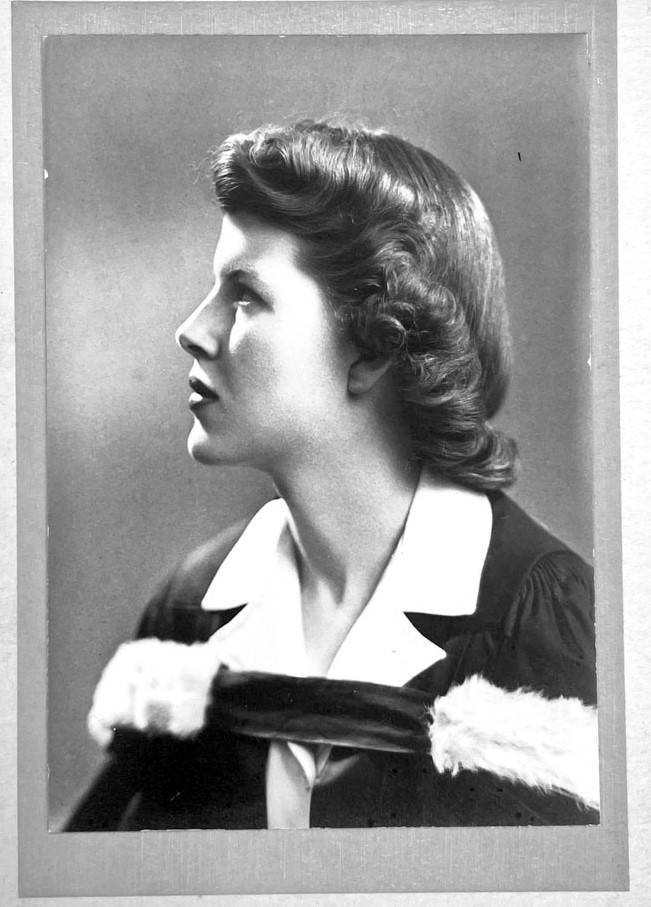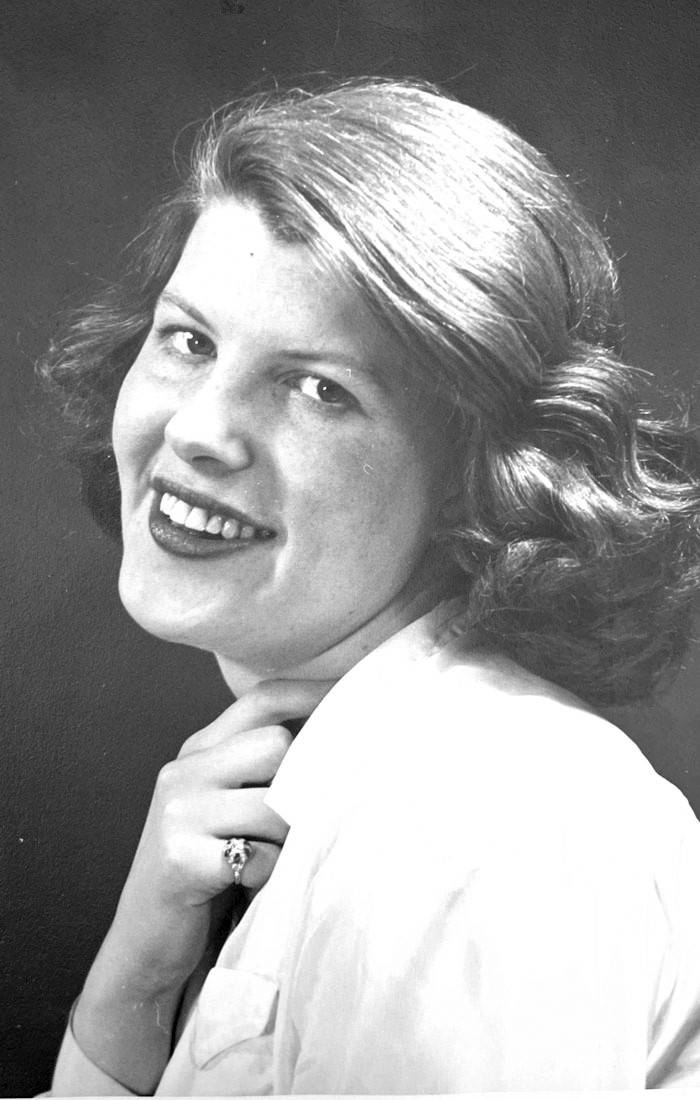The measure and the value of an undergraduate education in the humanities inhere in how a person comes, by its means, to understand his or her vital concerns and in how it continues throughout life to pose its questions and suggest its answers to the living being.
My mother would never have expressed herself in such a self-consciously literary style. But I know that what I have just expressed formed a belief by which she lived (one of many). I know that because of the way it was passed down to me by the mysterious process that operates between parent and child.
Jan, as she was known to everybody, was formed by the education she received at UC (graduating in 1942) and the friendships she formed there. I heard her occasionally sing, “Velut arbor aevo, may she ever thrive-o.” This did not hold, for me, the emotion of the Skye Boat Song, the lullaby of my infancy. But it was equally expressive of her. Janet Macdonald Tupper was born in 1920 in Vernon, B.C. Her parents were Nova Scotians on both sides. Her mother, born Mary Myra Dickie, was a strong-willed Edwardian beauty. Her father, Charles Tupper, was a handsome, gentle man of great charm. If he was visiting when I was young, he might say to my mother, “It’s just about time for the Hurricane to blow in,” meaning me. My grandfather was of redoubtable parentage – his grandfather was Sir Charles Tupper. He had wanted to go to sea as a naval cadet but that was not permitted parentally, so he studied civil engineering at McGill and built railways back when that was still done (including at the front during the Great War). His job was peripatetic and, therefore, so was his family. My grandmother drove Jan and her sister, Dorothy (Dorrie), across the country from Vernon, B.C. to Antigonish, N.S. in what must have been one of the last Model T’s around.
Later they lived in Toronto on Coulson Avenue. Jan and Dorrie attended the Bishop Strachan School for their high-school education. In those days, everyone in the province was set the same final examinations in Grade 13. In her year, Jan ranked first in the province, thus receiving the Governor General’s gold medal. She won a Reuben Wells Leonard scholarship to UC and enrolled in the honours program in English Language and Literature. She joined the Alpha Phi fraternity (Please don’t call it a sorority.). She admired Professor A.S.P. Woodhouse, a luminary in the UC English Department at the time and a Milton specialist, and it must have been from Professor Norman Endicott that she acquired her love for Sir Thomas Browne (the author of Religio Medici), for he was a Browne specialist.


In her grad note in the university yearbook, she reported that her future plans were “pleasantly vague.” My mother was not cut out to be an academic. She was too modest for that, but also, her outlook was a wholly practical one. (As Sir Charles once said, and she liked to quote, “Oh, to shiver a lance, to shake a spear!”) She joined the Globe and Mail and spent a happy few years as a general reporter (one of two women – the other was June Callwood). She covered everything, did reviews and was often assigned to interview famous people visiting Toronto, an assignment for which she was naturally suited by her youth and sympathetic manner.
In 1944, she met Capt. Philip Underwood of the Royal Canadian Artillery, who was then home on leave to attend a staff course. After a short engagement, they wed. She left the Globe but continued writing as a freelancer. She preserved, I remember, a cover story she wrote in 1945 for Maclean’s on the prospects for the women war workers about to be made redundant.
After the war, my parents moved to Vancouver, where my father worked for a bank (“refusing people mortgages,” he later said). He may have hated his job but they loved their life. My mother was an intensely social person, she was surrounded by her relations and everyone was happy to be alive and home in the aftermath of war. My late sister, Marnie, was born there, and then I. My sister, Nora, came after we moved to Toronto, when my father took a new job. It was in Toronto in the ’50s, ’60s, and ’70s that my mother applied her great practical skills, intelligence, and, above all, the warmth and generosity of her spirit — qualities remarked upon by everyone who knew her and for which, often, she was loved — to various philanthropic activities. She was president of the Women’s Committee of the National Ballet Guild (though never a board member — was that, perhaps, reserved for men?). That task finished, she found her perfect role as co-chair of the Restoration Campaign for UC, persuading the well-connected lawyer E.A. Goodman to serve as the other co-chair. This was a job that not only engaged her skills, but also fulfilled her love for her alma mater and for the fabric of the most interesting Victorian building in the country. She made new friends, of course — with the principal, Professor Richardson, and especially with Professor Eric Arthur, the project restoration architect. Later, Jan served on the Governing Council and as the University’s appointee to the board of the Toronto General Hospital. It all fascinated her.
She never lost her intellectual curiosity, as one example will suffice to show. In middle age, she took up the study of the Russian language. It must have been her love of that country’s literature that prompted her to do so, if not her love of language itself, for there was otherwise no reason.
What did I receive from my mother, apart from unfailing love and hundreds of letters? An education mostly, beginning with the sense that one’s ideals are inextricable from one’s inheritance and that everything is owed to them. Next, a love of reading. Her books (mentioning, randomly, the novels of Thomas Mann and Vladimir Nabokov) are my books. She read the thousands of pages of À la recherche du temps perdu when pregnant with Marnie; I did so during a period of comparable inactivity during third year at U of T law school. Then, a love of good conversation and the interest in other minds that this implies. A friend of mine since childhood recalls that she was the only adult who spoke to him as if he were one himself. And, finally, a love of the arts. Of ballet, naturally, which she understood intimately and watched critically, but of all the others, too. When my age was still to be counted in single digits, I was taken to Die Walküre and to Love’s Labours Lost and was bored rigid at both – but their influence stuck. She took me to the great Picasso and van Gogh retrospectives at the Art Gallery of Toronto and, when I was 16, around the great art museums of Europe. At that point, or a little later, I was loosed upon the world, destined, in her eyes, to achieve something great.
Jan died in 1986, at age 66, to the great grief of many. My father followed shortly after her.
